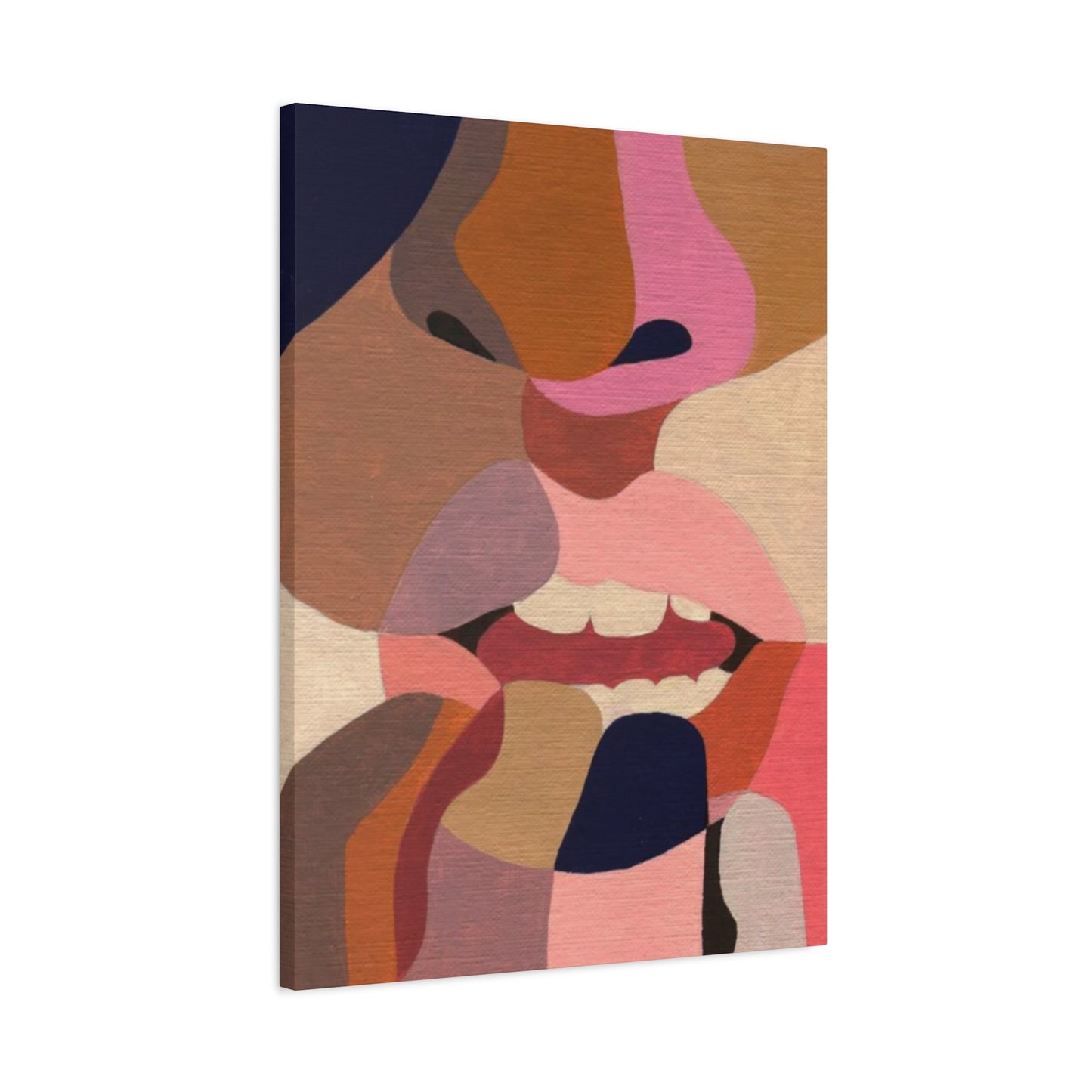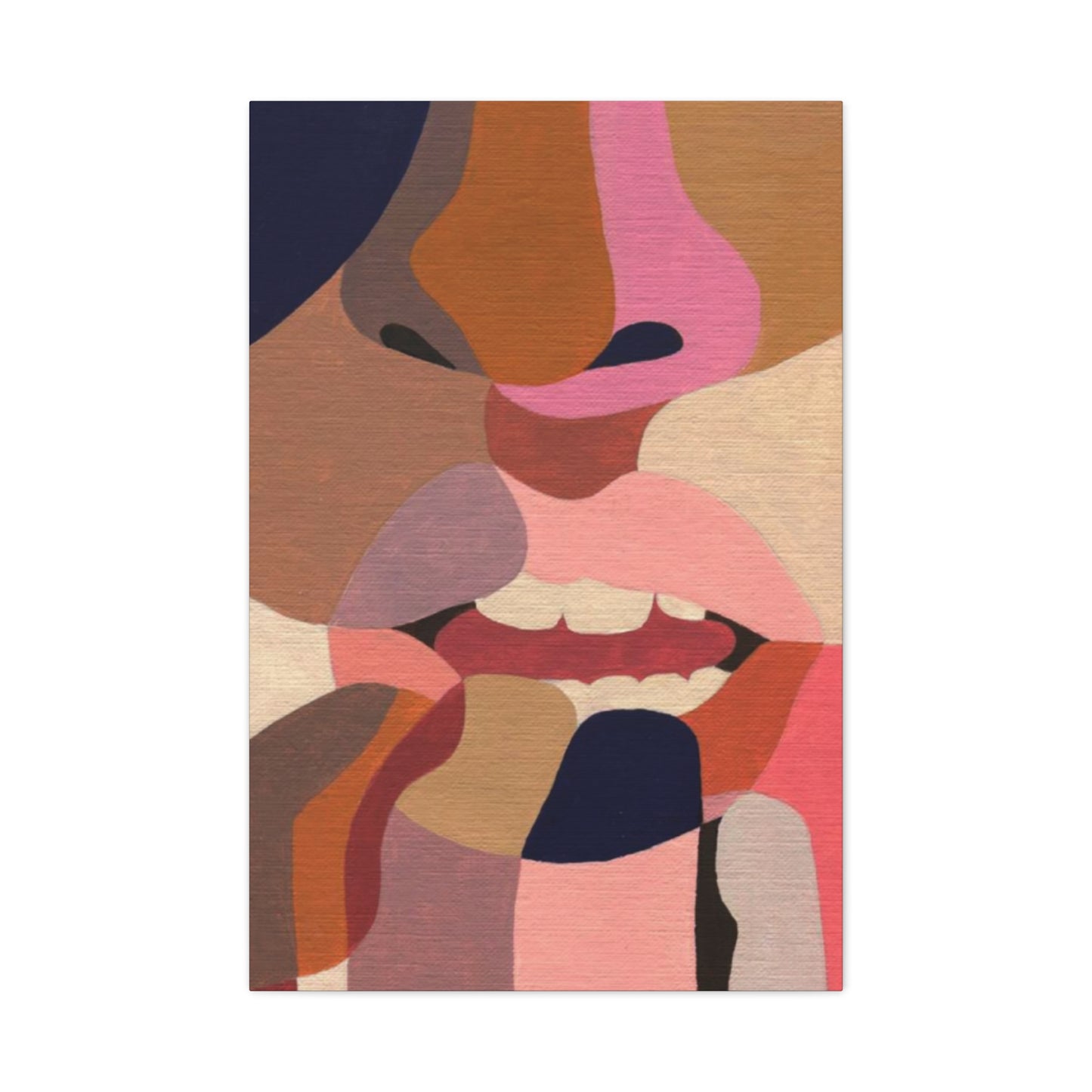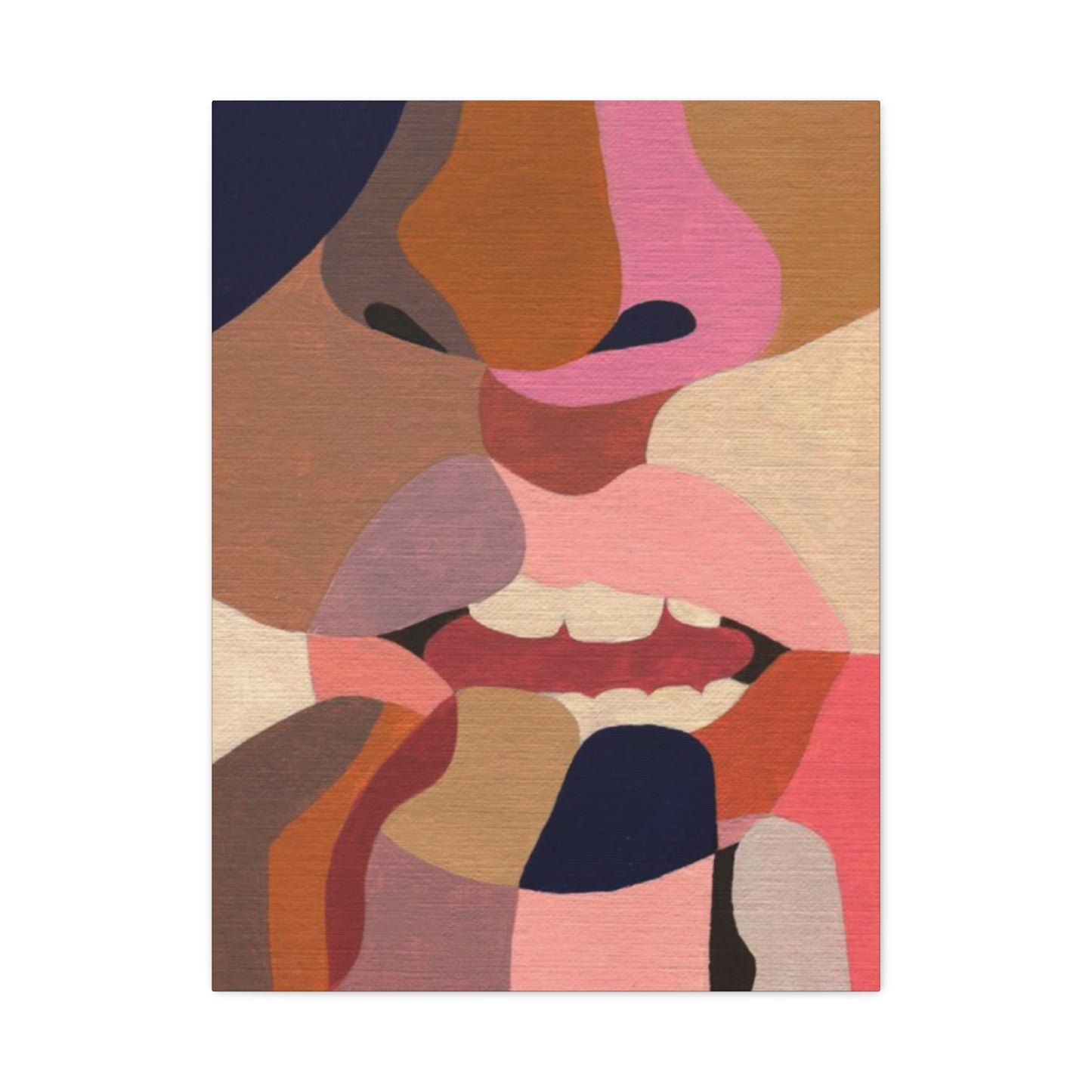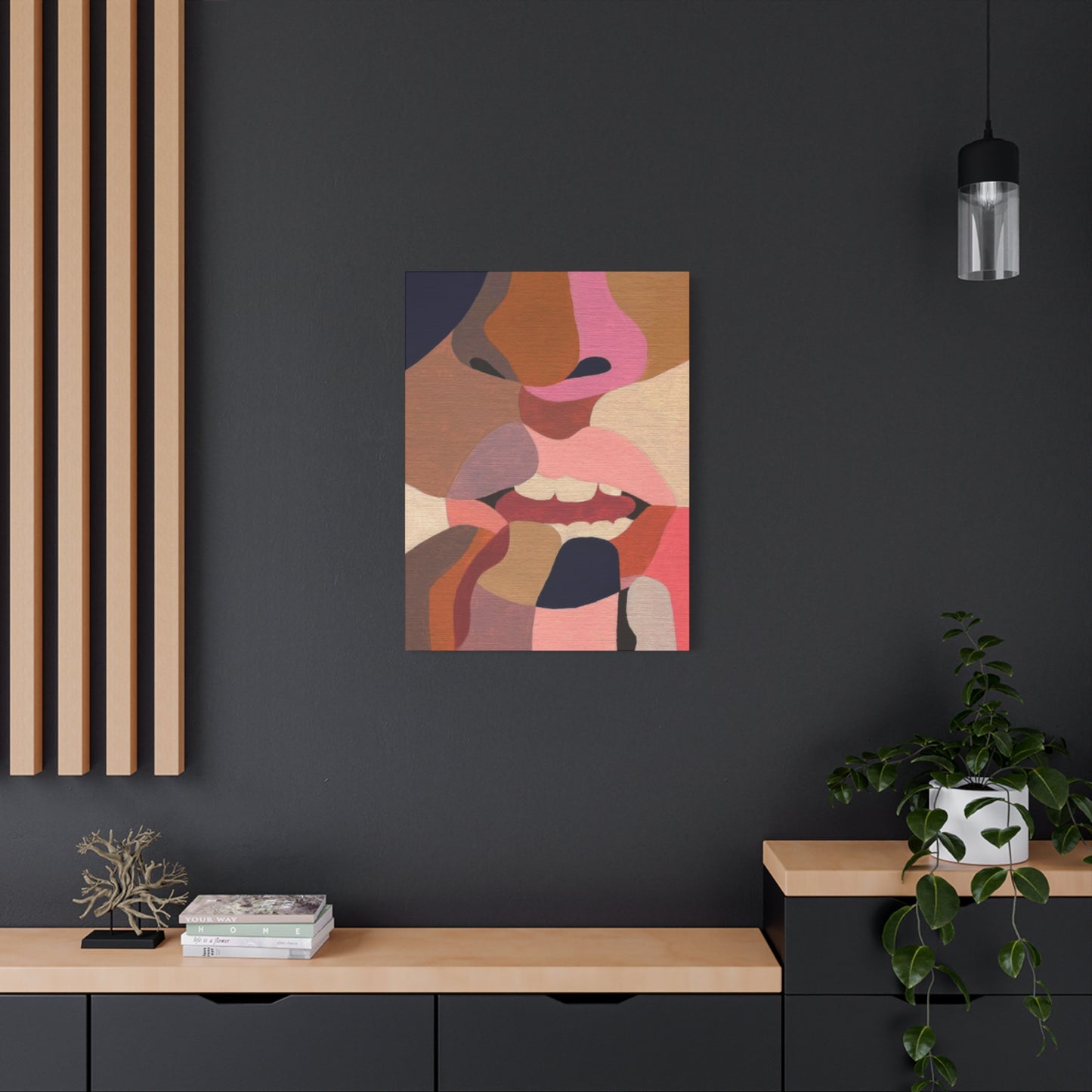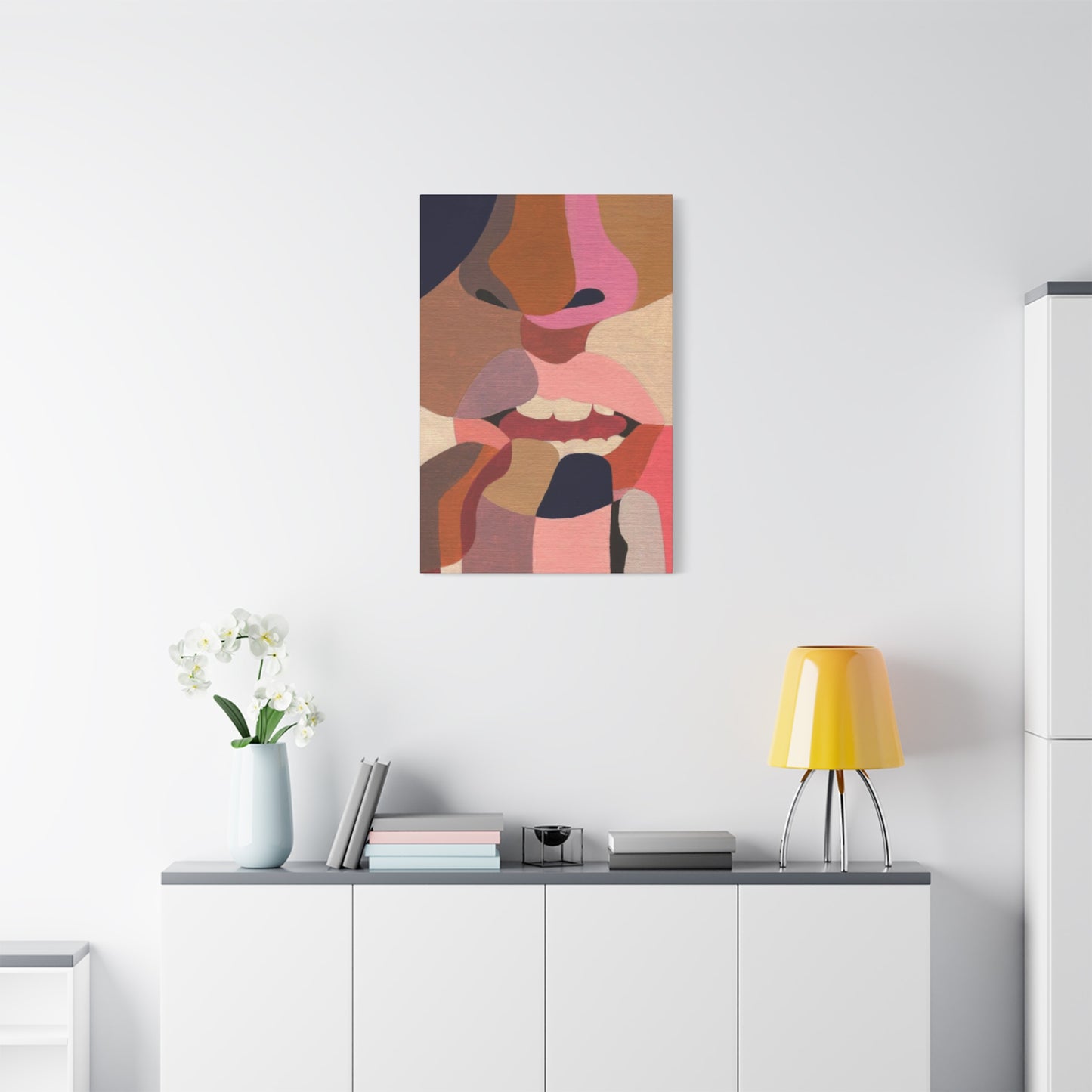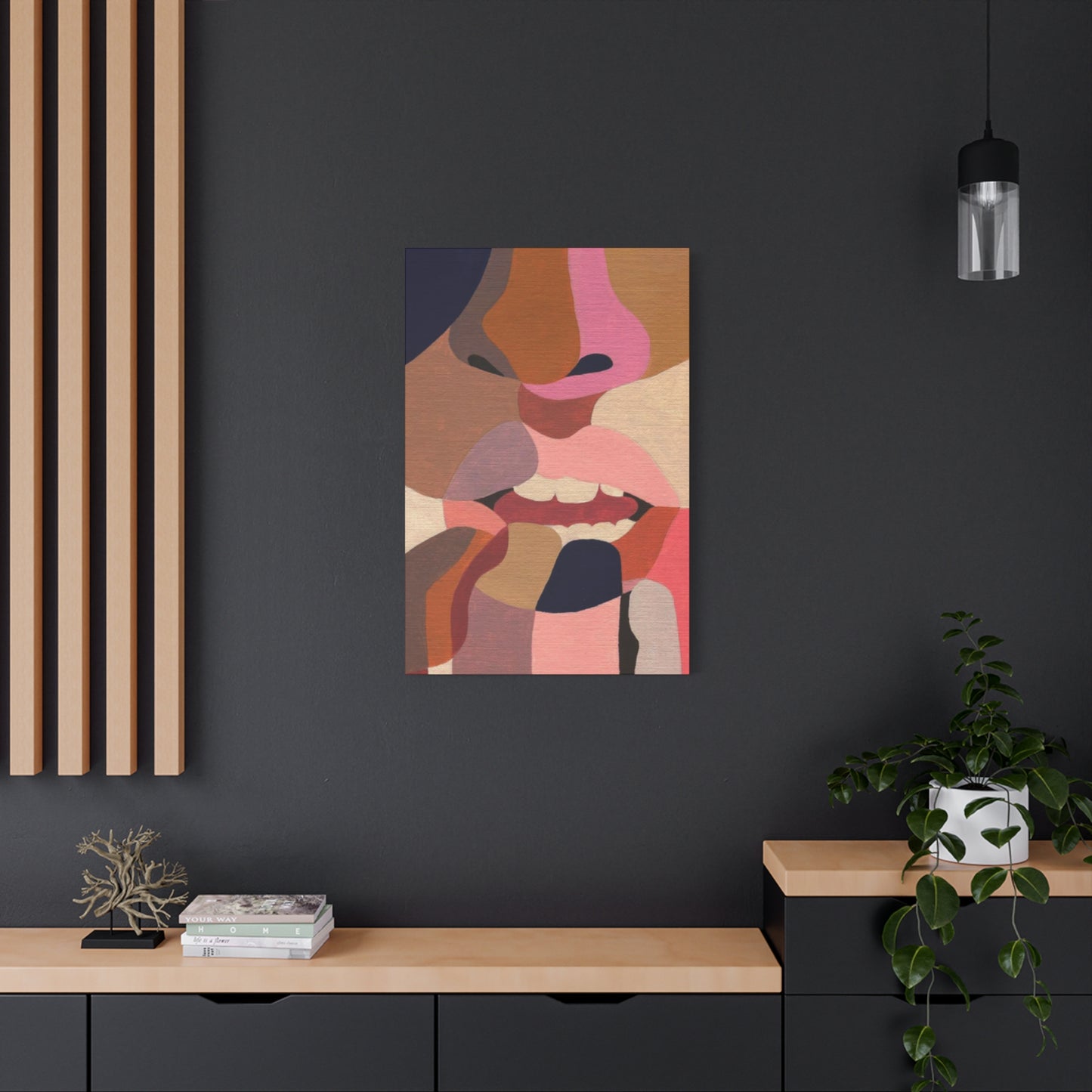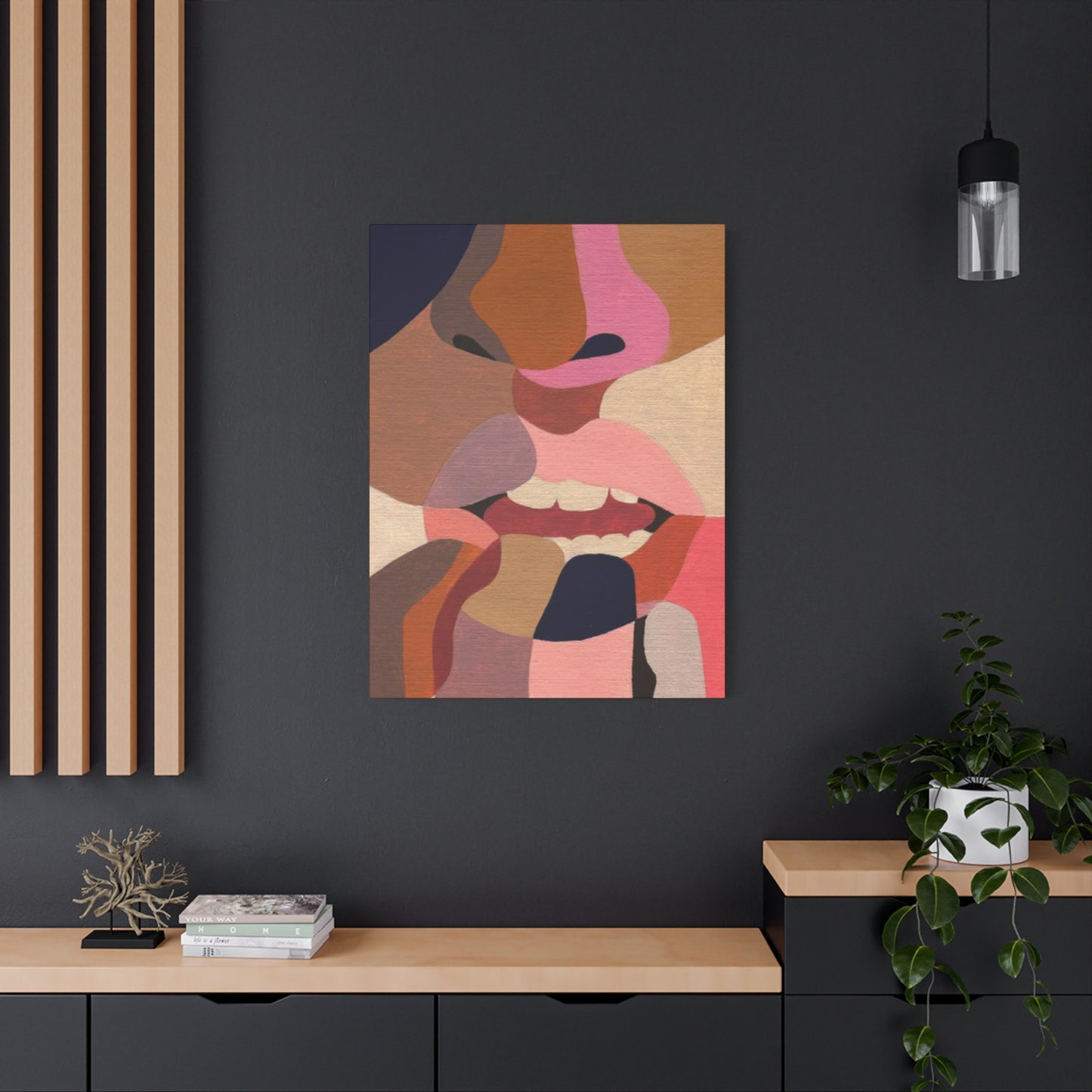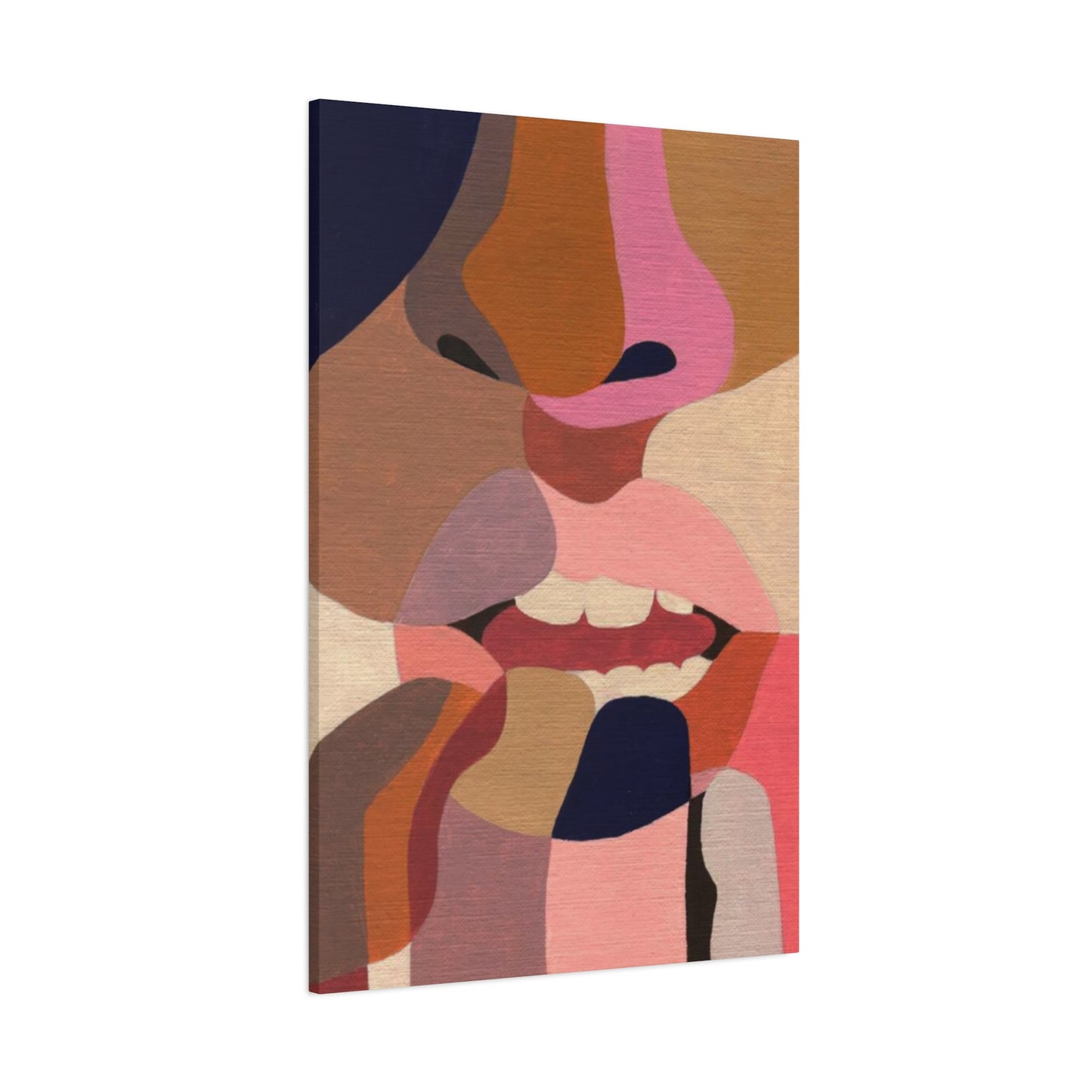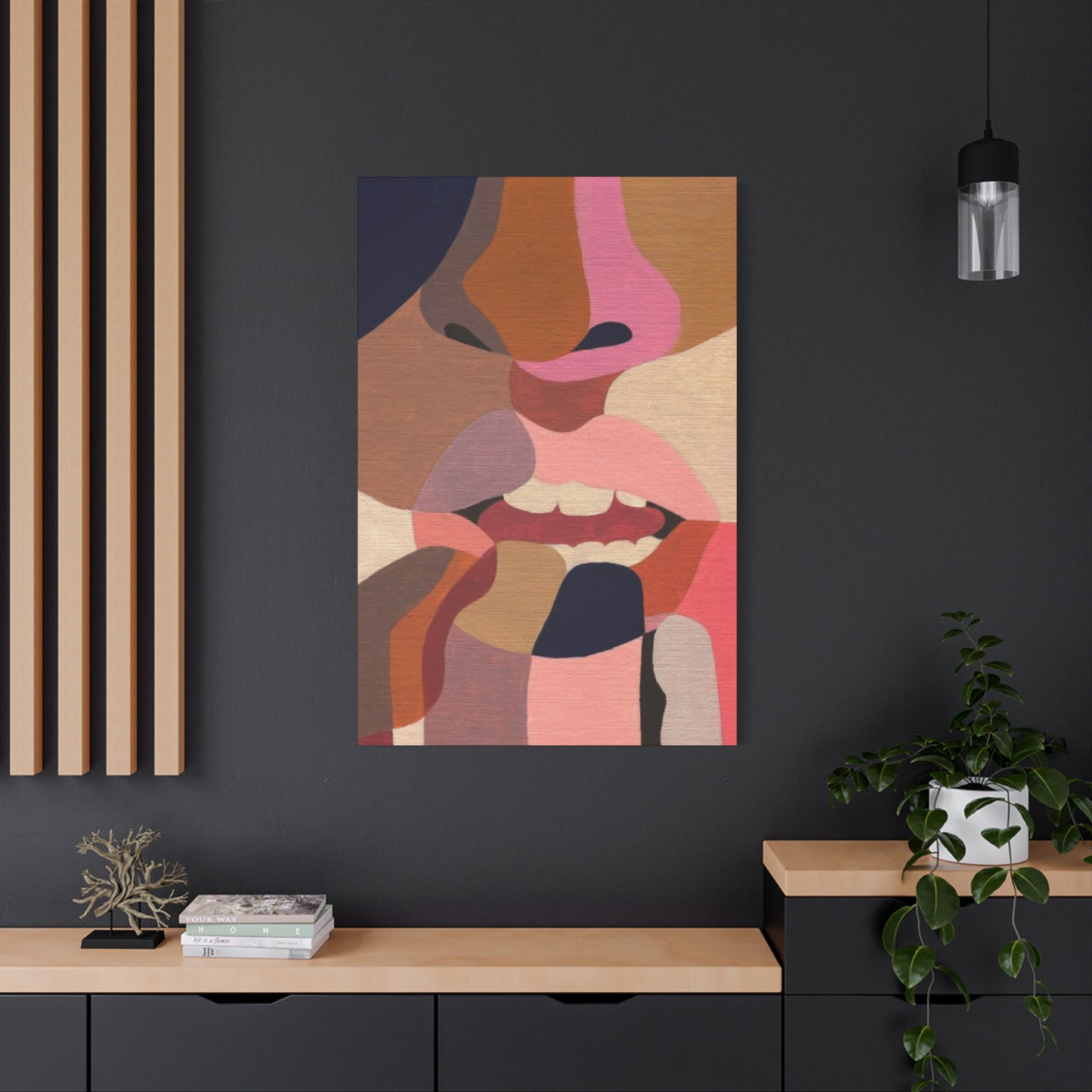Abstract Passion: The Ultimate Guide to Lips Abstract Painting Wall Art for Modern Interior Design
The world of contemporary wall decoration has witnessed a remarkable transformation in recent years, with artistic representations of facial features emerging as a powerful statement in modern interior design. Among these visual expressions, artistic depictions of mouths have become increasingly popular, offering homeowners and designers a unique way to infuse personality, confidence, and sophistication into living spaces. This comprehensive exploration delves into the fascinating realm of mouth-themed artwork, examining how these captivating pieces transform ordinary walls into extraordinary focal points that speak volumes about style, self-expression, and contemporary aesthetics.
Bold Lips Modern Canvas Revolution
The emergence of striking mouth imagery on contemporary canvases represents a significant shift in how we perceive and utilize wall decorations within our living environments. This artistic movement draws inspiration from various sources, including fashion photography, pop culture iconography, and the timeless appeal of beauty itself. When artists translate the organic curves and vibrant colors of human features onto canvas, they create pieces that resonate with viewers on both aesthetic and emotional levels.
Contemporary canvas pieces featuring prominent mouth imagery often employ bold color palettes that range from classic reds and pinks to unexpected hues like electric blues, deep purples, and metallic golds. These color choices allow homeowners to coordinate their wall decorations with existing interior design schemes while making a confident statement. The canvas medium itself provides an ideal surface for this type of artwork, as it allows for rich texture, depth, and the kind of visual impact that flat prints cannot achieve.
Artists working in this genre frequently experiment with scale, creating everything from intimate small-format pieces perfect for powder rooms to large-scale installations that command attention in spacious living areas. The versatility of canvas as a medium enables creators to explore various techniques, from precise photorealistic renderings to loose, expressive brushwork that captures the essence of the subject through gesture and color rather than exact representation.
The modern canvas approach to this subject matter often incorporates mixed media elements, combining traditional painting techniques with digital manipulation, collage elements, or even three-dimensional embellishments. This fusion of methods results in artwork that feels simultaneously classic and cutting-edge, honoring the traditions of figurative art while pushing boundaries in exciting new directions. For collectors and decorators, these pieces offer an opportunity to invest in artwork that feels both timeless and thoroughly contemporary.
Pop Glamour in Creative Form
The intersection of pop culture aesthetics and sophisticated artistic expression has given rise to a distinctive style that celebrates glamour through a contemporary lens. This approach draws heavily from the visual language of fashion magazines, celebrity photography, and the kind of polished imagery that dominates social media feeds. However, rather than simply reproducing these references, artists working in this style reinterpret them through creative filters that elevate commercial imagery to fine art status.
Pop glamour in this context refers to artwork that embraces the glossy, attention-grabbing qualities of popular culture while maintaining artistic integrity. These pieces often feature high-contrast color schemes, dramatic lighting effects, and a sense of theatrical presentation that makes them impossible to ignore. The subject matter lends itself perfectly to this treatment, as it naturally embodies concepts of allure, confidence, and self-presentation that are central to both pop culture and glamour aesthetics.
What distinguishes truly exceptional work in this category is the ability to balance accessibility with sophistication. The best examples appeal to a wide audience through their immediate visual impact while offering layers of meaning and artistic technique that reward closer examination. This duality makes them ideal for various settings, from trendy boutiques and salons to upscale residential spaces where owners want to project both style consciousness and cultural awareness.
The creative form aspect of this artistic movement encompasses not just the finished product but the entire conceptual approach. Artists might draw inspiration from vintage advertisements, iconic fashion photography, or contemporary beauty trends, then filter these references through their unique creative vision. The result is artwork that feels familiar yet fresh, speaking to our collective visual memory while offering something genuinely new and exciting.
Colorful Lips Wall Décor Excellence
The strategic use of vibrant color in wall decorations featuring mouth imagery represents one of the most effective ways to inject energy, personality, and visual interest into interior spaces. Unlike monochromatic or neutral artwork, colorful pieces command attention and set the tone for entire rooms. When selecting or commissioning such pieces, understanding color theory and its psychological effects becomes crucial for achieving the desired ambiance.
Warm color palettes featuring reds, oranges, and hot pinks create environments that feel energetic, passionate, and welcoming. These hues stimulate conversation and activity, making them ideal for social spaces like living rooms, dining areas, and home offices where creativity and interaction are valued. The intensity of these colors can be modulated through saturation and value choices, allowing for everything from soft, romantic tones to bold, attention-demanding shades.
Cool color options including blues, purples, and teals offer a different set of emotional and aesthetic qualities. These shades bring calmness, sophistication, and a sense of mystery to spaces while still maintaining visual interest. When applied to mouth-themed artwork, unexpected cool colors create intriguing contrasts that challenge viewer expectations and demonstrate artistic innovation. The juxtaposition of a traditionally warm subject rendered in cool tones generates visual tension that keeps artwork engaging over time.
Multi-colored approaches that incorporate gradients, color blocking, or painterly blending techniques add complexity and depth to wall decorations. These pieces work particularly well in eclectic or maximalist interiors where bold mixing of patterns, textures, and colors is celebrated. The key to successfully incorporating such vibrant artwork lies in balancing it with other design elements, ensuring the piece enhances rather than overwhelms the space.
The choice of color also affects how artwork interacts with lighting conditions throughout the day. Pieces with metallic accents or glossy finishes will appear different under natural daylight versus evening artificial lighting, adding an element of dynamic change to your décor. This temporal dimension transforms static artwork into living elements of your interior design that evolve with daily rhythms.
Creative Expression Through Mouth Art
Artistic representations of human features have long served as vehicles for exploring complex ideas about identity, communication, and human experience. When artists focus specifically on the mouth as their primary subject, they tap into rich symbolic territory that encompasses themes of voice, consumption, desire, sensuality, and social interaction. This focused approach allows for deep exploration of a single element that carries tremendous expressive potential.
The mouth serves as a powerful communicative tool in daily life, and artwork that highlights this feature naturally engages with concepts of speech, silence, and the space between words. Some pieces emphasize closed mouths, suggesting secrets, restraint, or introspective contemplation. Others depict parted features, implying speech, song, surprise, or invitation. These subtle variations in presentation dramatically affect the emotional tone and conceptual content of the artwork.
Artists working in this idiom often employ distortion, fragmentation, or stylization to move beyond literal representation toward more expressive territory. A mouth might be rendered in impossible colors, stretched beyond realistic proportions, or broken into geometric components. These creative interventions transform familiar anatomy into something strange and new, encouraging viewers to see this everyday feature with fresh eyes and consider it from unexpected angles.
The relationship between representation and interpretation becomes particularly interesting in this context. While viewers immediately recognize the subject matter, the artistic treatment invites them to move beyond simple identification toward deeper engagement with the work's formal qualities and conceptual implications. This balance between recognition and defamiliarization creates artwork that is simultaneously accessible and thought-provoking.
Lips Art for Chic Interior Spaces
Integrating sophisticated mouth-themed artwork into contemporary interior design requires careful consideration of scale, placement, style, and context. When done thoughtfully, these pieces become defining elements that elevate entire spaces, establishing focal points that organize visual attention and reinforce overall design concepts. The key lies in understanding how to select and position artwork to complement rather than compete with other design elements.
Chic interiors often embrace a philosophy of curated minimalism, where each element is intentionally chosen for maximum impact. Within this framework, a striking piece featuring bold mouth imagery can serve as the room's exclamation point, the element that prevents minimalism from feeling cold or impersonal. The organic curves and inherent sensuality of the subject matter soften hard architectural lines while maintaining a modern aesthetic sensibility.
Scale considerations become paramount in chic design contexts. A large-scale piece makes a confident statement appropriate for spacious rooms with high ceilings, while smaller works create intimacy in more modest spaces. The proportion between artwork and wall space should follow design principles that prevent pieces from appearing lost on expansive walls or cramped in limited areas. Generally, artwork should occupy between two-thirds and three-quarters of the available wall width above furniture for optimal visual balance.
Color coordination between artwork and surrounding décor creates cohesion without requiring exact matching. A piece featuring predominantly coral tones might echo accent pillows, throws, or decorative objects elsewhere in the room, creating visual harmony through thoughtful repetition. Alternatively, artwork can introduce contrasting colors that provide visual excitement and prevent spaces from feeling too matchy or predictable.
The positioning height also affects how artwork functions within a space. Gallery standard suggests hanging pieces so their center point sits at approximately 57 to 60 inches from the floor, which aligns with average eye level. However, rules can be broken intentionally in residential settings, with artwork positioned higher or lower based on sightlines, furniture arrangements, and architectural features.
Modern Glamour Meets Creative Innovation
The fusion of contemporary sophistication with innovative artistic approaches has produced a distinctive aesthetic category that appeals to design-conscious individuals seeking artwork that reflects their refined tastes. This synthesis honors the elegance and polish associated with traditional glamour while embracing the experimental spirit and boundary-pushing tendencies of modern creativity. The resulting pieces feel simultaneously luxurious and avant-garde.
Modern glamour in this context emphasizes high-quality materials, expert craftsmanship, and attention to detail. Whether produced through traditional painting methods, digital printing technologies, or mixed media techniques, these works exhibit a level of finish and technical proficiency that signals their status as serious artistic endeavors. Surface quality, color accuracy, and presentation all contribute to the overall impression of refinement and luxury.
The creative innovation aspect manifests through unexpected compositional choices, unusual color combinations, or novel approaches to familiar subject matter. An artist might fragment a single image across multiple panels, creating a triptych or larger configuration that transforms the subject through serial repetition with variations. Others might overlay graphic elements, text, or pattern work that adds conceptual layers and visual complexity to straightforward representational imagery.
Technological advances have expanded creative possibilities dramatically, allowing artists to manipulate images in ways that would have been impossible or prohibitively time-consuming just decades ago. Digital tools enable precise color adjustments, seamless compositing of multiple elements, and the creation of effects that blur boundaries between photography, painting, and graphic design. The best contemporary work leverages these technologies thoughtfully, using them to enhance rather than replace traditional artistic vision and skill.
The market for this type of sophisticated artwork continues to grow as collectors increasingly value pieces that demonstrate both aesthetic appeal and conceptual depth. Interior designers regularly specify such works for high-end residential projects, luxury hotels, upscale retail environments, and corporate spaces seeking to project an image of contemporary sophistication. The versatility of the subject matter allows it to function successfully across diverse contexts while maintaining its distinctive character.
Vibrant Lips on Canvas Mastery
The creation of compelling canvas works featuring vivid mouth imagery requires mastery of multiple artistic disciplines, from understanding color theory and composition to technical proficiency with chosen media. Artists working in this field must balance representational accuracy with creative interpretation, capturing essential characteristics while infusing work with personal vision and style. The canvas surface itself offers unique opportunities and challenges that influence final results.
Traditional canvas provides a textured surface that interacts with paint in distinctive ways, allowing for rich impasto applications, delicate glazing techniques, and everything in between. Oil paints offer unparalleled depth and luminosity, particularly effective for rendering the subtle color gradations and glossy surfaces associated with this subject matter. Acrylics provide faster drying times and bold, saturated colors that suit more graphic approaches. Some artists employ both media strategically, leveraging each material's strengths within a single composition.
Contemporary canvas pieces increasingly incorporate mixed media elements that add visual interest and textural variety. Gold leaf application might highlight certain areas, catching light and adding luxurious shimmer. Collage elements could introduce pattern, text, or photographic fragments that create dialogue between different visual languages. Resin pours seal surfaces with glass-like finishes that intensify colors and create remarkable depth.
The preparation of canvas grounds affects final appearance significantly. Traditional white gesso creates bright, reflective bases that maximize color vibrancy. Toned grounds in grey, ochre, or other colors establish unified color harmonies and can speed workflow by eliminating the need to cover every inch of white surface. Some artists deliberately leave portions of ground visible in finished works, incorporating these areas as active compositional elements rather than merely support surfaces.
Scale considerations for canvas works extend beyond mere size to encompass questions of detail level and viewing distance. Large-scale pieces intended for viewing from across rooms can employ broader brushwork and simplified forms that read clearly from distance while offering interesting surface qualities upon closer approach. Smaller intimate works demand different treatment, with refined detail and subtle effects that reward careful examination.
Art That Speaks Confidence Clearly
Certain artworks possess an ineffable quality that projects assurance and self-possession, immediately establishing atmosphere and setting tone for spaces they inhabit. Pieces featuring bold mouth imagery naturally embody these characteristics, as the subject itself represents communication, self-expression, and the confident presentation of self to the world. When selecting artwork intended to convey these qualities, understanding what generates this effect proves valuable.
Compositional confidence often manifests through decisive cropping and framing choices. Rather than tentatively including entire faces or excessive surrounding space, confident compositions zoom in tightly on their subject, allowing it to dominate the picture plane completely. This bold approach eliminates distractions and forces viewers to engage directly with the central motif. The resulting images feel immediate, impactful, and unapologetic in their visual assertiveness.
Color choices contribute significantly to perceived confidence levels. Saturated, pure hues read as more confident than muddy, mixed colors. High contrast between light and dark values creates drama and impact that command attention. Unexpected color combinations demonstrate creative courage and willingness to take risks. All these choices signal an artist comfortable with their vision and unafraid to present it boldly.
Technical execution also affects how confidently artwork communicates. Clean lines, deliberate mark-making, and purposeful application all suggest mastery and control. This doesn't necessarily mean photographic precision; expressive, gestural work can project tremendous confidence when marks appear intentional rather than tentative. The key distinction lies between confident experimentation and uncertain fumbling.
The psychological impact of displaying such confident artwork in living or working spaces should not be underestimated. Our environments shape our moods, attitudes, and even behaviors in subtle but significant ways. Surrounding yourself with imagery that projects assurance can actually reinforce these qualities in yourself, serving as daily visual reminders of the confidence and self-possession you wish to embody.
Creative Sensuality in Wall Prints
The exploration of sensual themes through wall-based artwork requires delicacy and sophistication to avoid crossing into territory that feels overtly provocative or inappropriate for most interior contexts. The best works in this category suggest rather than state, employing subtlety and artistic skill to evoke feelings of allure, intimacy, and aesthetic pleasure without resorting to crude or obvious imagery. Mouth-focused art naturally lends itself to this nuanced approach.
Sensuality in artistic contexts refers to engagement with the senses and celebration of physical beauty rather than explicitly sexual content. Artwork that successfully operates in this register appeals to aesthetic appreciation and emotional response, creating atmosphere rather than provocation. The curves, colors, and forms associated with this particular subject matter inherently carry sensual qualities that artists can amplify or soften through treatment and context.
Print technologies have advanced remarkably in recent years, enabling reproduction quality that rivals or even surpasses original artwork in some respects. Giclée printing on fine art papers or canvas produces richly saturated colors with excellent longevity when archival materials and proper techniques are employed. These high-quality prints make sophisticated artwork accessible to broader audiences while maintaining the visual impact and artistic integrity of original pieces.
The choice between original paintings and high-quality prints often comes down to budget considerations and collecting philosophy. Original works carry unique qualities including surface texture, the presence of actual brushstrokes or other mark-making, and the cachet of one-of-a-kind status. Quality prints offer more affordable access to desired imagery and can be produced in sizes tailored to specific spaces. Both options have legitimate places in contemporary collecting and decorating practices.
When selecting or commissioning sensual artwork for residential or commercial spaces, context matters tremendously. Pieces appropriate for private bedrooms or adults-only spaces might feel uncomfortable in family areas or professional environments. The most versatile works balance sensual qualities with sufficient artistic interpretation or stylization to make them suitable for diverse contexts while maintaining their essential character and appeal.
Contemporary Lips Painting Ideas
The contemporary art world offers endless possibilities for artists exploring mouth-themed imagery, with new approaches and interpretations constantly emerging as creators build upon historical precedents while incorporating current influences and technologies. For those interested in creating or commissioning such work, understanding the range of available approaches helps inform decisions and spark creative thinking about possibilities.
Photorealistic approaches aim to capture subjects with camera-like precision, celebrating technical skill and patient observation. These pieces often emphasize minute details like skin texture, subtle color gradations, and the interplay of light and shadow across curved surfaces. The challenge and appeal of hyperrealism lie in pushing representational accuracy to levels that rival or surpass photographic capture, creating images of almost uncanny clarity and presence.
Impressionistic treatments take opposite approaches, prioritizing overall visual impression and emotional resonance over detailed accuracy. Quick, gestural brushwork captures essential characteristics while leaving room for viewer interpretation and imagination. Color might be heightened for expressive effect, forms simplified to fundamental shapes, details suggested rather than meticulously rendered. These pieces often feel more energetic and spontaneous than their photorealistic counterparts.
Geometric or cubist interpretations fragment subjects into angular components, reassembling them according to alternate organizing principles. This approach invites viewers to engage more actively with images, mentally reconstructing recognizable forms from abstract elements. The resulting compositions often possess dynamic energy and visual complexity that rewards extended viewing as the eye discovers new relationships and patterns.
Pop art inspired pieces embrace bold graphics, flat color application, and references to commercial imagery and mass media. These works might incorporate Ben-Day dots reminiscent of printed comics, stark silhouettes with minimal detail, or bright, artificial colors that signal their debt to advertising and popular culture. The style's inherent accessibility and visual punch make it perennially popular for contemporary interiors.
Expressionistic approaches prioritize emotional content and subjective experience over objective representation. Colors might be arbitrary or symbolic rather than naturalistic, forms distorted for dramatic effect, surfaces worked with intense energy that remains visible in finished pieces. These emotionally charged works create strong atmospheric effects and tend to polarize viewers more than safer, more conventional approaches.
Expressive Beauty in Creative Lines
Line work forms the foundation of all drawing and much painting, serving as the most fundamental tool for translating three-dimensional reality onto two-dimensional surfaces. When artists employ linear approaches to depict mouth imagery, they strip away color and tonal modeling to focus on pure form, contour, and the expressive possibilities of marks themselves. This reduction to essentials often produces remarkably powerful results.
Contour line drawings trace the outlines and internal edges of forms with continuous or broken lines of varying weights and qualities. Single-line contours challenge artists to capture forms without lifting pencil or pen from surface, resulting in fluid, organic drawings with distinctive character. Varying line weight creates emphasis and suggests three-dimensionality even in the absence of shading or color.
Cross-hatching builds tone and volume through networks of intersecting lines rather than continuous shading. This classical drawing technique offers remarkable control and precision, allowing artists to render subtle gradations through the density, direction, and spacing of hatched marks. When applied to organic forms, cross-hatching creates surfaces that feel simultaneously structured and flowing.
Calligraphic approaches treat lines as gestural expressions worthy of appreciation in their own right, not merely as tools for representation. Brushwork inspired by Eastern calligraphic traditions often emphasizes the beginning and ending of strokes, variations in pressure and speed, and the expressive qualities of marks themselves. These pieces balance representation with abstraction, offering beautiful line work that describes forms while maintaining strong visual interest independent of subject matter.
Minimalist line drawings strip subjects down to absolute essentials, using the fewest possible marks to suggest forms and create recognition. This economical approach requires supreme confidence and skill, as every line must serve multiple purposes and no extraneous marks can hide behind decorative complexity. The resulting images possess clarity and elegance that more elaborate works cannot achieve.
Digital tools have expanded linear possibilities through perfect repeatability, easy modification, and effects impossible with traditional media. Vector graphics programs allow creation of mathematically precise curves and perfect geometric elements combined with organic drawing. Layer-based workflows enable complex buildup of linear elements with nondestructive editing capabilities. While these tools offer tremendous advantages, the best digital line work still requires the same fundamental drawing skills and aesthetic sensitivity as traditional approaches.
Modern Art for Fashion Spaces
The natural affinity between fashion and art makes mouth-themed imagery particularly appropriate for fashion-related commercial environments including boutiques, salons, showrooms, and fashion brand offices. These pieces reinforce brand identity, create memorable atmospheres, and signal to clients that they have entered spaces dedicated to style, beauty, and self-expression. Selecting appropriate artwork for such contexts requires understanding both aesthetic and practical considerations.
Fashion retail environments benefit from artwork that complements merchandise without overwhelming it. The visual competition in spaces filled with clothing, accessories, and other products means artwork must be impactful enough to register while integrated enough to function as environmental element rather than distraction. Mouth imagery works particularly well because it relates thematically to fashion and beauty without depicting specific products that might conflict with or date alongside changing inventory.
Beauty salons and spas represent ideal venues for this artistic subject matter, as the services provided relate directly to personal appearance, self-care, and transformation. Artwork in these contexts contributes to overall atmosphere while visually reinforcing the establishment's focus and expertise. Pieces should be sized and positioned to remain visible and impactful even in mirror-dominated environments where reflected images multiply and complicate visual fields.
Fashion photography studios and showrooms occupied by designers and brands serve as more sophisticated contexts where artwork can be more daring, conceptual, or experimental. These professional spaces often embrace cutting-edge aesthetics and demonstrate willingness to take visual risks. The audience consists primarily of industry insiders who appreciate creative innovation and understand visual references that might puzzle general consumers.
Corporate offices for fashion and beauty brands face unique challenges balancing professional workplace needs with brand-appropriate aesthetics. Artwork should project company values and design sensibilities while remaining suitable for diverse business activities from routine meetings to client presentations. The subject matter's inherent glamour and style consciousness makes it naturally fitting while its artistic treatment can be adjusted across a spectrum from conservative to avant-garde based on specific corporate culture.
Practical considerations for commercial installations include durability, maintenance, and safety. High-traffic public spaces require artwork with protective finishes that can withstand occasional contact and allow for cleaning. Wall-mounting systems should exceed safety requirements to prevent accidents. Lighting design must account for artwork, ensuring proper illumination that enhances rather than damages pieces while contributing to overall ambient lighting schemes.
Lips as the Language of Art
Throughout art history, specific body parts and features have carried symbolic weight beyond their literal anatomical functions, becoming shorthand for complex concepts and emotions. The mouth holds particularly rich symbolic territory, representing communication, consumption, pleasure, desire, and the boundary between inner and outer worlds. Artists who focus on this feature tap into deep wells of cultural meaning and psychological resonance.
In classical Western art, depictions of mouths often related to broader narratives and character studies within figurative compositions. Renaissance and Baroque painters devoted tremendous skill to rendering subtle expressions, understanding that slight variations in mouth position communicated different emotional states and personality traits. These historical precedents established foundations upon which contemporary artists build.
Surrealist artists of the early 20th century began isolating body parts from their usual contexts, creating uncanny juxtapositions and transformations. Magritte, Dalí, and others painted mouths in unexpected places, at unusual scales, or combined with unrelated elements. These innovations demonstrated that isolated features could carry meaning and visual interest independent of complete figures, opening possibilities that contemporary artists continue exploring.
Pop art further elevated isolated features to focal point status, with artists like Andy Warhol creating iconic images of famous mouths drawn from celebrity photographs. This movement validated commercial imagery and mass media as legitimate artistic source material while developing graphic approaches to representation that remain influential today. The bold simplification and saturated colors characteristic of pop art established visual vocabulary still employed in contemporary work.
Contemporary artists working with this subject matter benefit from these historical precedents while bringing current sensibilities and concerns to their work. Issues of identity, gender, race, and representation that preoccupy much current art discourse find expression through choices about whose mouths to depict, how to render them, and what contexts to provide. Even seemingly straightforward decorative works participate in larger conversations about beauty standards, self-presentation, and visual culture.
The universality of the subject provides accessibility while its symbolic richness offers depth. Everyone possesses the feature depicted, creating immediate recognition and connection. Simultaneously, cultural associations, personal experiences, and individual aesthetic responses ensure diverse interpretations and emotional reactions. This combination of familiarity and interpretive openness makes the subject matter enduringly fascinating for both creators and audiences.
Creative Emotion in Colorful Imagery
Color psychology recognizes that hues affect human mood, emotion, and even behavior in measurable ways. When artists employ color strategically in mouth-themed artwork, they harness these psychological effects to create pieces that don't merely please the eye but actively shape emotional atmosphere in spaces they inhabit. Understanding these color-emotion connections enables more intentional artwork selection and more effective interior design.
Red, the color most traditionally associated with this particular subject matter, carries powerful psychological associations including passion, energy, excitement, and danger. Warm reds stimulate heart rate and create feelings of urgency or arousal. Deeper crimsons suggest sophistication and luxury while bright scarlets feel youthful and energetic. The natural association between red and the subject matter makes it an obvious choice, but its psychological intensity requires careful consideration regarding appropriate contexts and desired effects.
Pink softens red's intensity while maintaining warmth and suggestions of femininity, romance, and playfulness. Light pinks create gentle, soothing atmospheres while hot pinks bring energy without red's aggressive edge. The color's strong cultural associations with femininity make it particularly popular but also potentially limiting, though contemporary artists increasingly deploy pink in ways that challenge or complicate traditional gender coding.
Purple combines red's energy with blue's calm, resulting in a hue associated with luxury, creativity, spirituality, and mystery. Historically rare and expensive to produce, purple retains connotations of wealth and exclusivity that enhance artwork's perceived value. The color's relative rarity in nature makes it feel more artificial and contemporary when applied to natural subjects, creating interesting aesthetic tension.
Blue, unusual for this particular subject, creates striking effects through its very unexpectedness. The color's associations with calm, trust, and stability contrast with the subject's inherent sensuality, generating visual and conceptual interest. Turquoise and teal bring tropical, vacation-like feelings while navy and cobalt project sophistication and confidence.
Metallic and iridescent effects add another dimension entirely, creating dynamic color that changes with viewing angle and lighting conditions. Gold brings luxury and warmth, silver provides cool sophistication, and copper offers rich, organic glow. These special effect colors create artwork that feels precious and jewel-like, rewarding repeated viewing as different aspects reveal themselves under varying conditions.
Multi-color approaches including rainbows, gradients, and color blocks create energetic, playful effects perfect for eclectic or maximalist interiors. These pieces celebrate color itself as aesthetic element worthy of attention independent of naturalistic representation. The technical challenge of balancing multiple hues without creating muddy or chaotic results separates skilled colorists from less accomplished practitioners.
Bold Beautiful and Creative Masterpieces
The intersection of boldness, beauty, and creative vision produces artwork that transcends mere decoration to become truly memorable and impactful. These exceptional pieces demonstrate confidence in every aspect from conception through execution, resulting in works that command attention, stimulate conversation, and remain visually engaging over extended periods. Understanding what elevates good artwork to greatness helps collectors and decorators identify truly special pieces.
Boldness manifests through willingness to make strong choices and commit fully to particular visions rather than hedging with safe compromises. This might involve unexpected scale, unusual color combinations, unconventional compositions, or any number of other decisions that demonstrate creative courage. Bold artwork creates immediate impact, establishing presence that organizes and energizes surrounding spaces.
Beauty, in contemporary artistic contexts, encompasses far more than conventional prettiness or simple aesthetic pleasure. Beautiful artwork possesses formal qualities including balanced composition, harmonious color relationships, skillful technique, and overall visual coherence that satisfy aesthetic sensibilities. However, contemporary beauty often includes elements of strangeness, challenge, or conceptual complexity that prevent pieces from feeling merely decorative or superficial.
Creative vision represents the intangible element that distinguishes derivative work from genuine artistic innovation. Pieces demonstrating strong creative vision feel fresh and original even when working with familiar subject matter. The artist's unique perspective, distinctive style, or particular approach to materials and process all contribute to this essential quality that separates truly exceptional art from competent but unremarkable work.
Technical mastery provides the foundation enabling creative vision to manifest successfully. Ideas, no matter how brilliant, require skill to realize effectively. The best artwork demonstrates command of chosen media and processes, with technical aspects serving creative intent rather than displaying technique for its own sake. Mastery appears effortless, though countless hours of practice and refinement underlie apparently spontaneous results.
Emotional resonance ensures artwork connects with viewers on levels beyond pure visual appreciation. Pieces that engage feelings as well as intellect create stronger, more lasting impressions. This emotional dimension might arise from subject matter, formal qualities, expressive handling, or some combination of factors that adds up to work that moves viewers and creates memorable experiences.
Pop Aesthetics in Modern Art Forms
The legacy of pop art continues influencing contemporary creative production decades after the movement's 1950s and 60s heyday. Pop's embrace of popular culture, mass media, commercial imagery, and bold graphic approaches established aesthetic vocabulary that remains vital and relevant in today's image-saturated culture. Understanding pop's contributions helps contextualize much current artwork that draws on these traditions.
Pop art emerged partially as reaction against the subjective, emotional intensity of abstract expressionism that dominated 1950s art world. Instead of introspective personal expression, pop artists turned outward to the visual culture surrounding them, elevating humble subjects like soup cans, comic books, and celebrity photographs to fine art status. This democratic impulse broke down hierarchies between high and low culture in ways that continue reverberating.
The movement's graphic approach to image-making, influenced by commercial art and printing processes, established visual style characterized by flat color application, bold outlines, simplified forms, and high contrast. These qualities translate effectively across media and scales, working as well on gallery walls as printed reproductions. The style's clarity and immediate readability make it accessible while its knowing appropriation and transformation of source material provides conceptual sophistication.
Appropriation, the practice of borrowing and recontextualizing existing images, became central to pop methodology. Artists sourced material from advertisements, newspapers, product packaging, and other mass media, transforming found imagery through artistic intervention. This approach raised questions about originality, authorship, and the nature of art itself that remain vital in today's remix culture where appropriation is ubiquitous.
Contemporary artists continue pop traditions while adapting them to current contexts. Where original pop artists responded to emerging consumer culture and mass media, today's inheritors address digital culture, social media, celebrity, and the overwhelming abundance of images in contemporary life. Mouth-themed imagery fits naturally within this framework, as the subject appears constantly in fashion spreads, advertisements, social media posts, and other commercial contexts that contemporary artists mine for material.
The tension between art and commerce that pop art explored remains highly relevant as contemporary art world becomes increasingly market-driven and commercialized. Artists working with recognizable, accessible imagery like mouth-themed pieces navigate complex territory between creating genuine artistic expression and producing decorative commodities for consumer markets. The most successful practitioners manage to operate in both registers simultaneously, creating work that functions as both art and décor without compromising either dimension.
Lips Wall Art for Stylish Homes
Residential interior design has evolved dramatically in recent decades, with homeowners increasingly viewing living spaces as extensions of personal identity and platforms for self-expression. In this context, wall artwork functions not merely as space-filling decoration but as meaningful element that communicates values, interests, and aesthetic sensibilities. Mouth-themed pieces offer particularly effective tools for creating stylish, contemporary interiors.
Living rooms serve as primary entertaining and relaxation spaces where first impressions form and most waking home hours occur. Artwork in these areas should create welcoming atmospheres while reflecting household personality. A striking mouth-focused piece above a sofa or fireplace provides confident focal point that organizes room visually and offers conversation starter for guests. Scale becomes crucial in larger living spaces, with properly sized pieces preventing the room from feeling underfurnished or tentative.
Bedrooms offer opportunities for more intimate, personal artwork selections since these private spaces need please only residents rather than broad audiences. Many people choose more sensual or romantic imagery for bedrooms, making mouth-themed pieces natural fits. Positioning artwork as focal point above the bed creates immediate visual impact while maintaining clear sightlines from sleeping position. Alternative placement on accent walls or in dressing areas provides different effects and might suit particular layouts better.
Home offices and creative workspaces benefit from energizing, inspiring artwork that stimulates creativity and maintains motivation during work hours. Mouth imagery, particularly pieces emphasizing communication and self-expression, reinforces professional activities and ambitions. For those working in creative fields, fashion, beauty, or related industries, such artwork creates professional yet personal environments that blur boundaries between work and lifestyle.
Dining rooms represent sophisticated entertaining spaces where artwork contributes to overall ambiance during meals and gatherings. Pieces in these areas should enhance rather than overwhelm dining experiences, with colors and subject matter that complement rather than conflict with food and table settings. Mouth imagery works particularly well in dining contexts given the space's natural association with consumption and sensory pleasure.
Entryways and hallways often receive insufficient attention in decorating schemes despite serving as transition spaces that set tone for entire homes. A dramatic artwork piece immediately inside the entrance creates memorable first impression and signals to visitors that they have entered a thoughtfully designed space. Hallways benefit from serial arrangements of related pieces that create visual rhythm and make potentially awkward transitional spaces feel intentional and designed.
Color and Curves in Canvas Form
The marriage of vibrant color and organic curves creates particular visual pleasure, as our eyes naturally find satisfaction in both chromatic richness and flowing, natural forms. When these elements combine in artwork depicting mouths, the result engages viewers on multiple sensory and aesthetic levels. Understanding why these combinations work so effectively helps in both creating and selecting artwork.
Organic curves associated with natural forms provide psychological comfort and aesthetic satisfaction that geometric shapes and hard edges cannot match. Our brains evolved in natural environments filled with organic forms, leaving us predisposed to find such shapes attractive and approachable. The curves associated with this particular anatomical feature embody these qualities while adding suggestions of sensuality that amplify emotional impact.
Color provides another dimension of sensory stimulation and emotional engagement. While black and white imagery offers certain advantages in clarity and graphic impact, most viewers respond more strongly to color, which activates different neural pathways and creates richer perceptual experiences. The psychological and emotional effects of specific hues add layers of meaning and mood beyond what forms alone can communicate.
The interaction between color and form creates additional interest when artists employ techniques that make these elements work together rather than merely coexisting. Colors might flow along curves, emphasizing natural contours and creating a sense of movement. Alternatively, color transitions might work against forms, creating tension and visual energy through the relationship between representational elements and chromatic effects.
Conclusion:
The allure of lips abstract painting wall art lies in its dynamic fusion of emotion, color, and modern artistic expression, making it a captivating addition to contemporary interiors. These artworks transform a simple motif — the human lips — into a versatile symbol of passion, sensuality, communication, and individuality. Abstract interpretations push beyond realism, using bold brushstrokes, vibrant color palettes, and imaginative textures to convey emotion and personality. In doing so, lips abstract paintings become more than decorative pieces; they act as conversation starters, sources of inspiration, and focal points that energize and enliven modern living spaces.
At the heart of lips-themed abstract art is the celebration of self-expression and human emotion. The mouth, a primary instrument of communication, symbolizes dialogue, intimacy, and connection. By rendering lips in abstract forms, artists capture not just the physical shape but the feelings, moods, and energies associated with speech, emotion, and sensuality. This abstraction allows homeowners and collectors to engage with the artwork on multiple levels — appreciating both its aesthetic beauty and its symbolic resonance. Each brushstroke, color gradient, and layering technique invites interpretation, making every piece a unique experience for viewers.
From an interior design standpoint, lips abstract paintings offer remarkable versatility. Large-scale canvases can dominate a living room or bedroom wall, creating a striking centerpiece that infuses the space with energy and sophistication. Smaller prints can be arranged in series to establish rhythm, depth, and visual interest on a gallery wall. The bold use of color — ranging from fiery reds and pinks to muted nudes and metallic accents — complements modern palettes, providing contrast against neutral tones or harmonizing with other vibrant décor elements. Whether in minimalist spaces, eclectic interiors, or contemporary lofts, these artworks add personality, movement, and intrigue.
Beyond their visual appeal, lips abstract wall art carries a powerful emotional and psychological resonance. The abstract nature encourages viewers to engage their imagination, reflecting on feelings of love, passion, curiosity, or self-expression. Such pieces can energize spaces, inspire creativity, or introduce a sense of intimacy and warmth. In offices, they can foster dialogue and bold thinking; in homes, they bring personality and vibrancy that reflects the inhabitant’s taste and emotional connection to art. Unlike conventional décor, lips abstract paintings interact with the viewer, inviting interpretation and creating a unique emotional experience each time they are observed.
The artistry behind lips abstract painting is as diverse as it is expressive. Artists experiment with textures, layering, mixed media, and unconventional techniques to highlight the sensual curves, shadows, and forms of the lips. Some works emphasize bold, graphic shapes, while others explore fluidity and movement, capturing the ephemeral qualities of emotion. The use of color is strategic, with contrasting tones and metallic highlights drawing attention and creating focal points that engage the viewer. This blend of artistic innovation and symbolic richness ensures that lips abstract paintings suit a wide range of contemporary interiors, from edgy urban lofts to sophisticated gallery-inspired spaces.
Incorporating lips abstract wall art also demonstrates the transformative power of art in interior design. These pieces act as visual anchors, providing energy, personality, and sophistication while complementing furniture, lighting, and architectural elements. Their abstract nature allows them to bridge diverse design aesthetics, seamlessly integrating with modern, eclectic, minimalist, or even maximalist environments. As a result, they not only enhance a room’s aesthetic appeal but also imbue it with narrative, emotion, and style that resonate with both residents and visitors.
In conclusion, Abstract Passion: Lips wall art epitomizes the fusion of contemporary artistry, emotional depth, and visual sophistication. It turns a simple motif into a dynamic statement, inviting engagement, reflection, and admiration. These artworks transform walls into expressive canvases that celebrate communication, intimacy, and individuality while elevating modern interiors with boldness and elegance.
Ultimately, embracing lips abstract painting wall art is a celebration of creativity, emotion, and modern design. It allows homeowners, collectors, and interior enthusiasts to craft spaces that are vibrant, inspiring, and deeply personal — where every glance at the artwork evokes passion, curiosity, and a connection to the expressive power of contemporary art.

















